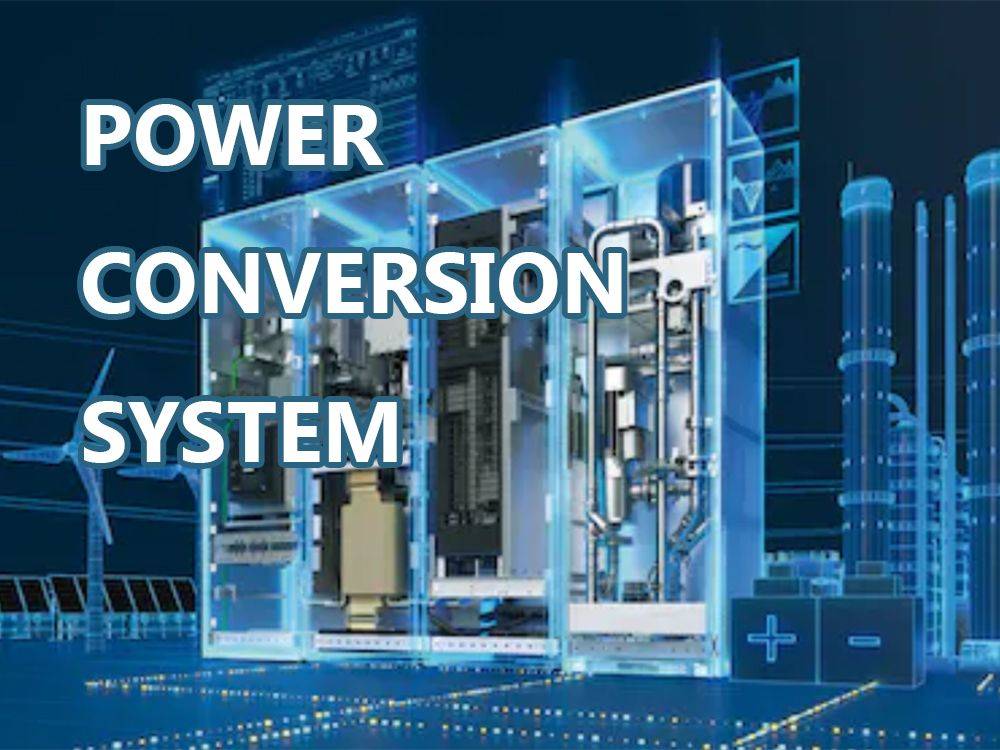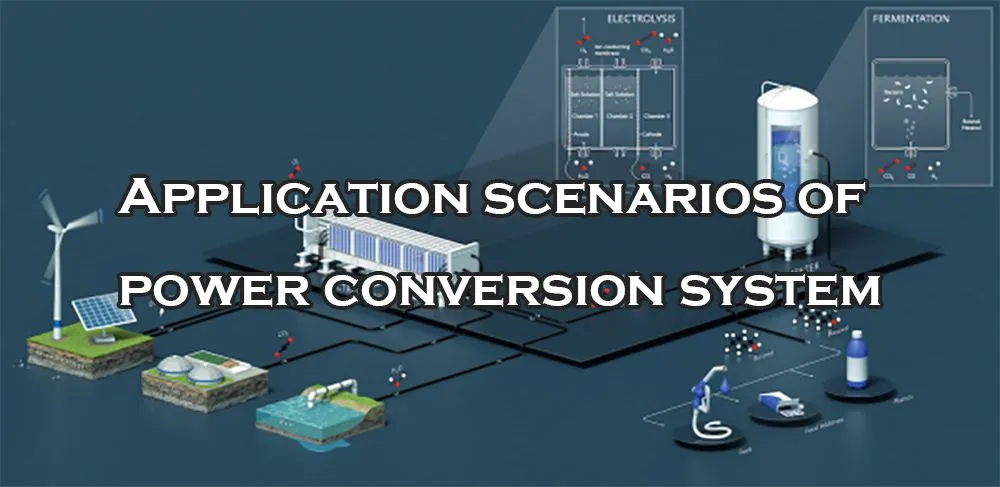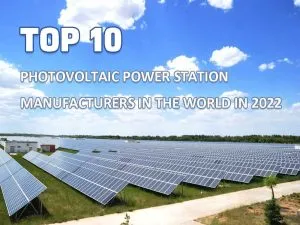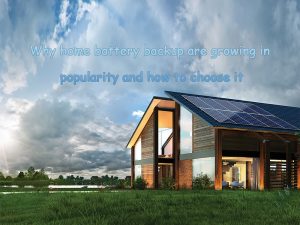Energy storage power conversion system principle and functions
Table of Contents

It realizes two-way flow of energy in occasions such as power grid shaving peaks and valleys, smoothing new energy fluctuations, and energy recovery and utilization, actively supporting the grid voltage and frequency, and improving the quality of power supply. This article will take you to understand the functions of power conversion system and the selection of power conversion system.
The definition of the power conversion system
As one of the important forms of large-scale energy storage systems, battery energy storage especially lithium ion battery energy storage has many uses such as peak regulation, valley filling, frequency regulation, phase regulation, and emergency backup. For battery information, please refer to top 10 energy storage battery companies in China.
Compared with conventional power sources, large-scale energy storage power stations can adapt to rapid changes in load, and play an important role in improving the safe and stable operation level of the power system, as well as the quality and reliability of power grids. At the same time, it can also optimize the power supply structure, realize green environmental protection, achieve the overall energy saving and consumption reduction of the power system, and improve the overall economic benefits.
In the electrochemical energy storage system of the power conversion system, the device connected between the battery system and the power grid (and/or load) to realize bidirectional conversion of electric energy can control the charging and discharging process of the battery, and carry out the conversion of AC and DC, in the case of no grid, it can directly supply power to the AC load.
PCS consists of DC/AC bidirectional converter, control unit, etc. The PCS controller receives background control commands through communication, and controls the converter to charge or discharge the battery according to the sign and size of the power command, so as to adjust the active power and reactive power of the grid.
At the same time, the PCS can communicate with the battery management system through the CAN interface, dry contact transmission, etc., to obtain the battery pack status information, which can realize the protective charging and discharging of the battery and ensure the safe operation of the battery.
How the power conversion system works
The energy storage power conversion system (PCS) is an AC/DC side controllable four-quadrant operation converter device, which realizes the AC-DC bidirectional conversion of electric energy. Power conversion system can realize the bidirectional energy transfer between the DC battery and the AC grid of the battery energy storage system,through the control strategy, the charging and discharging management of the battery system, the tracking of the load power on the grid side, the control of the charging and discharging power of the battery energy storage system, and the control of the grid side voltage in the off-grid operation mode are realized.
Features and functions of the power conversion system
The main function of the power conversion system is that under the condition of grid connection, the energy storage system performs constant power or constant current control according to the microgrid monitoring instructions, charges or discharges the battery, and at the same time smoothes the output of fluctuating power sources such as wind power and solar energy;
Under the microgrid condition, the energy storage system serves as the main power supply to provide the voltage and frequency support (V/F control) of the microgrid, and the load in the microgrid works based on this voltage and frequency. The PCS adopts double closed-loop control and SPWM pulse modulation method, which can adjust the output voltage, frequency, active and reactive power accurately and quickly.
Basic control functions
● Grid-connected constant power charge and discharge control
● Grid-connected constant voltage current-limiting charging
● Off-grid V/F control
● Reactive power regulation control
● On-grid-off-grid smooth switching control
● Anti-islanding protection function and islanding detection for mode switching function Fault ride-through control function
Basic protection function
● Battery reverse polarity protection
● DC overvoltage protection
● DC overcurrent protection
● Grid side over/under voltage protection
● Grid side overcurrent protection
● Grid side over/under frequency protection
● IGBT module overcurrent protection
● IGBT module over temperature protection
● Transformer/reactor over temperature protection
● Lightning protection
● Unplanned island protection
Application scenarios of power conversion system
● It can be used in distributed power generation systems such as wind power and solar energy to ensure the balance and continuity of distributed power supply, effectively improve its power output quality, and improve the ability to connect to the power grid.
● It can be used in the stability of the power system. It can respond to load fluctuations through rapid electrical energy storage, absorb excess energy or supplement the lack of energy, and realize dynamic adjustment of high power. It is well adapted to frequency regulation and voltage power factor correction, thereby improving the stability of system operation.
● It can be used as an emergency power supply like UPS lithium battery to provide users with electric energy during the power failure of the large power grid or other power sources, and improve the reliability of the power supply.
● It can be used for peak shaving and valley filling in the power grid, which can alleviate the contradiction between supply and demand on the user side, reduce the investment of power generation equipment, improve the utilization rate of power equipment, and reduce line losses.
● It can be used in the micro-grid, as the main power supply, to provide the voltage and frequency support of the micro-grid, so that wind power and photovoltaics can contribute to the micro-grid and supply power to the regional loads.
● It can be used for various types of energy storage elements to realize flexible interface between energy storage and power grid, and can meet the requirements of independent or grid-connected operation.
How to select and calculate the energy storage converter
The configuration of the power conversion system is generally determined according to the actual load in the microgrid and the capacity of distributed generation energy.Loads are divided into important loads (loads such as computer room, office, monitoring, etc.), non-important loads (loads such as air conditioning, lighting, boilers, door guards, etc.),the load data generally requires on-site measurement, generally measuring the time-sharing data of working days and holidays, and excerpting the data of the typical time of the four seasons for comprehensive analysis.
Power conversion system capacity matching
The energy storage capacity is configured according to 1.2 times the load capacity. If the important load reaches 200kW, it is recommended to configure a 250kW power conversion system. If other loads need to run off-grid, the energy storage power ratio should be increased accordingly.
Transformer ratio of power conversion system
The transformer ratio of the power conversion system is determined by the DC voltage input range (that is, the battery voltage range). The calculation method is as follows:
Transformer ratio = Ul (minimum battery voltage)/1.414. If the voltage range of the iron-lithium battery is 360~480VDC, 360/1.414=254, the transformer ratio can be determined as 200. If the configuration without a transformer is selected, the minimum voltage of the battery must be above 540V before it can be connected to the 400V power grid.
Power conversion system additional function configuration
Self-synchronization function (S): The power conversion system can achieve seamless on-off-grid switching without other devices. On the premise that the grid-connected switch can be controlled remotely, the power conversion system sends an instruction to open the grid-connected switch when it is running from grid-connected to off-grid operation.
When the off-grid to grid-connected operation is issued, an instruction is issued to close the grid-connected switch (the closing condition is judged by the converter, and cannot be closed manually); Supercapacitor charger function (C): When the power conversion system is connected to a supercapacitor product, it can start charging the supercapacitor from 0 voltage, and perform charging and discharging when the supercapacitor voltage reaches the operating voltage, replacing the role of the traditional charger.
After reading this article, if you need to know related company information, you can refer to top 10 pcs energy storage manufacturers.



























